Chimney Swift Nest Tower at Hildacy
By Mike Coll, Preserve Manager
Chimney swifts are a unique species in many ways. Swifts do not perch on branches as other birds do; instead they have evolved to cling like bats on vertical surfaces (except facing upwards). They mate “on the wing” and then build tiny half-cup nests, adhered with their saliva to crevasses in interior walls, usually chimneys. In the fall they gather into huge communal roosts before migrating to their wintering grounds in the jungles and caves of South America. But perhaps the most intriguing attribute of Chimney Swifts has been their ability to adapt their nesting practices to accommodate the ubiquitous impact that human deforestation and development has had on available structures.
Prior to European settlement, the majority of eastern North America was old growth forest. In that type of ecosystem there would be both very old trees and even older dead trees that were still standing. In these huge standing dead trees would have existed suitable cavities for Chimney Swifts to nest. However, since the 1600s, virtually the entire continent has been deforested by humans. In its place humans have built houses and buildings, many of which have chimneys. Chimney Swifts (only present during the summer months when chimneys are rarely used) were able to transition a large portion of their population to these brick and mortar substitutes. While natural cavities are still used by some percentage of nesting chimney swifts, the vast majority of the current population is believed to reproduce in human made structures.
The problem is that brick and mortar chimneys are increasingly being replaced by smoother materials and/or covered by “pest guards,” both of which preclude swifts from being able to attach their nest to an interior wall. Likely because of this trend and other challenges faced by aerial insectivore species, Chimney Swifts have shown consistent decreases in population. Since 1966 a cumulative decline of 65 percent has been reported by the North American Breeding Bird Survey. Among other warning lists, the species is considered a “common bird of steep decline” in the 2014 State of Birds Report. Although overall population numbers have not yet decreased enough to put this species on a threatened or endangered list, the current rate of decline is profound.
In attempt to combat these declines, the Chimney Swift Conservation Organization has created these plans for a Chimney Swift nest tower as a substitute nesting structure. With the help of volunteer Brian Bernero and my new assistant Gabrielle LeBlanc, we were able to construct a tower and hope to have it installed at Hildacy before the swifts return to search for nest sites in early May.
Below is my construction process from diagram to finish. I plan to mount it to an existing tree stump as a base. The only thing not shown in my plan is that the bottom panel has a square opening (about 10″x 10″) that is covered by a metal screen that will allow both airflow and nest monitoring.
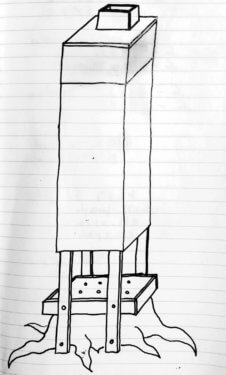
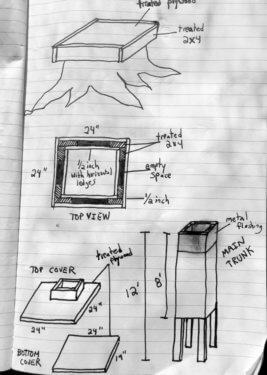
The interior walls are T1-11 siding. It is important to give a horizontal ledge for swifts to attach the nest. Panels are attached with screws and exterior wood glue to treated 2x4x12’s.
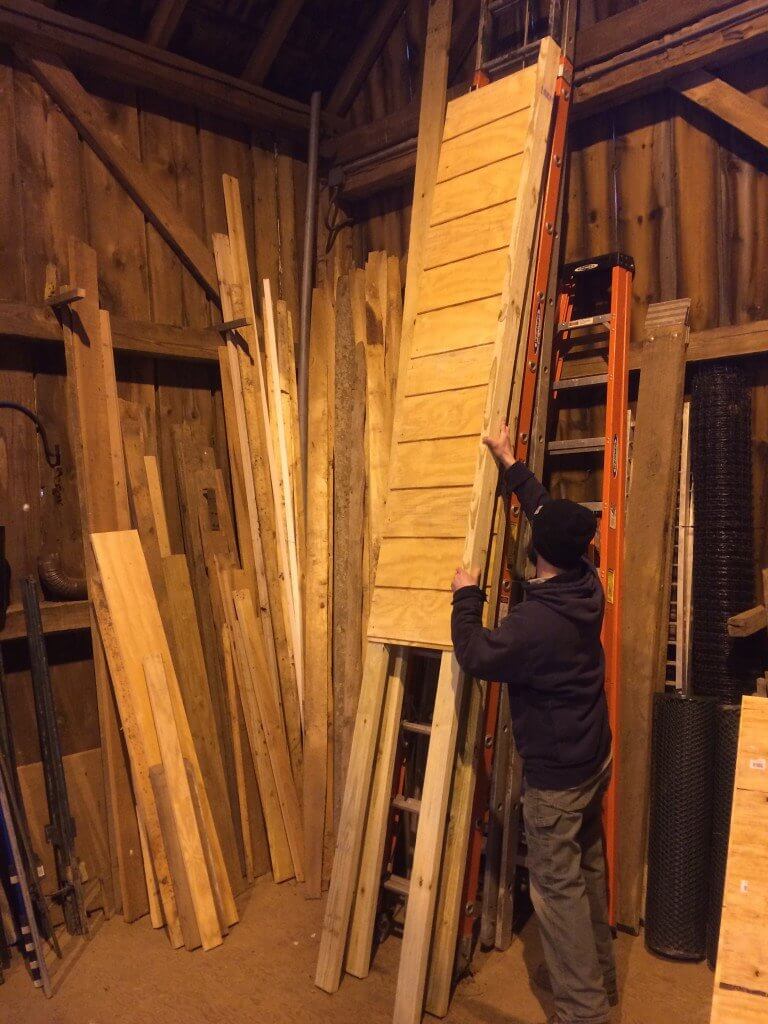
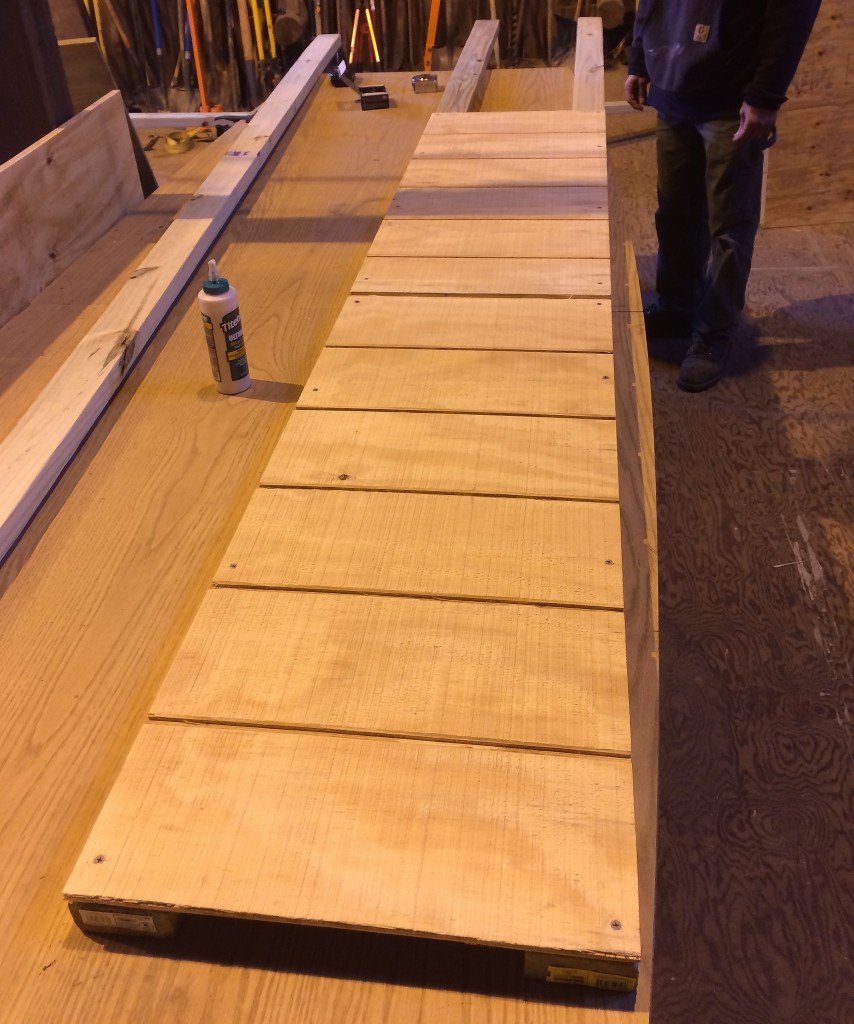
It is important for the nesting structure to have depth because swift nests are often found as far as 6′ down from the upper opening.We then used treated 2x4x8’s to connect the walls.
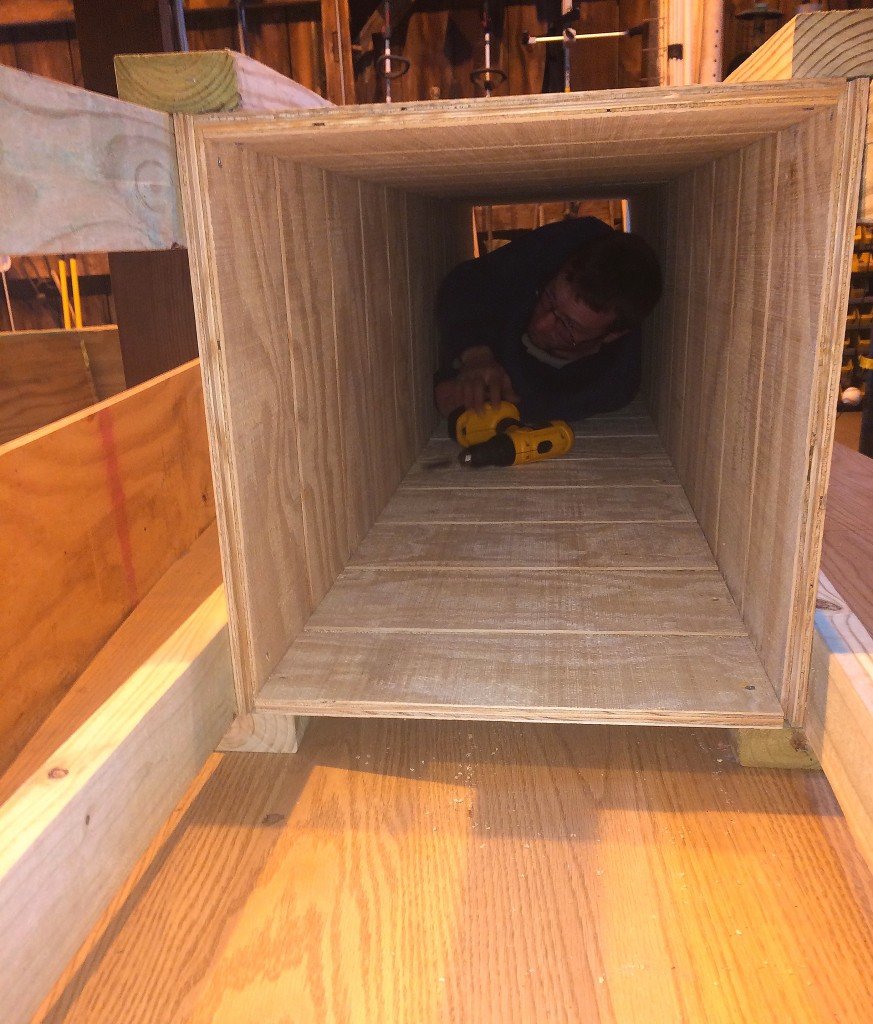
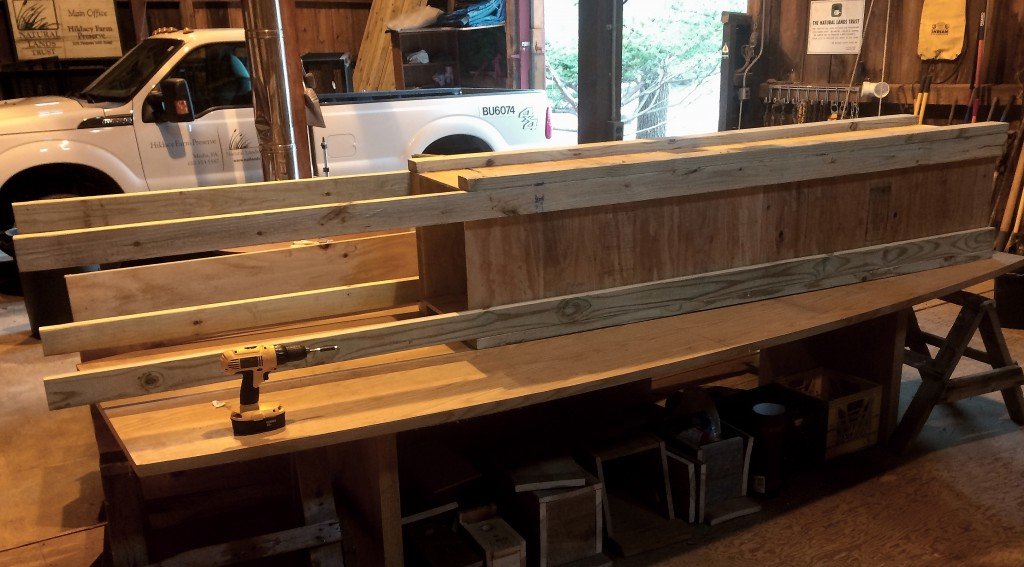
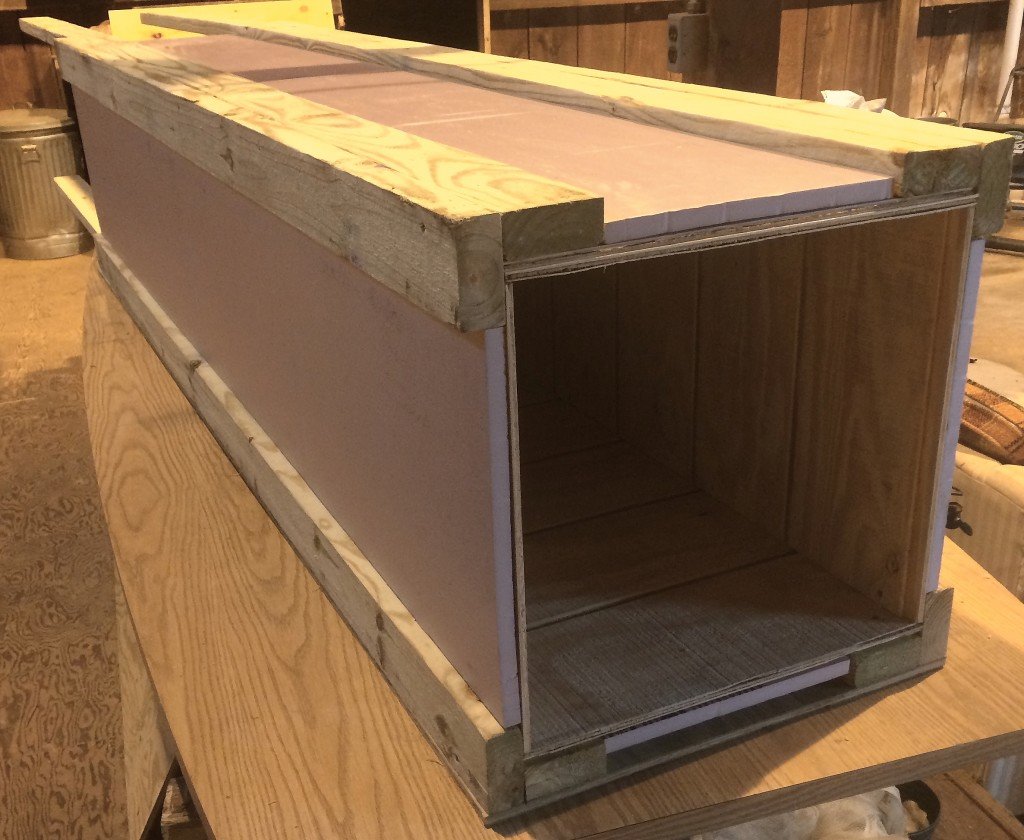
Because Swifts want cooler temperatures at their nest sites, 3/4″ foam board insulation is added to the space between the inner and outer walls. This tower will be placed in an area that is at least partially shaded and there may be some airflow drawn through it.
Outer walls added–1/2″ treated ply:
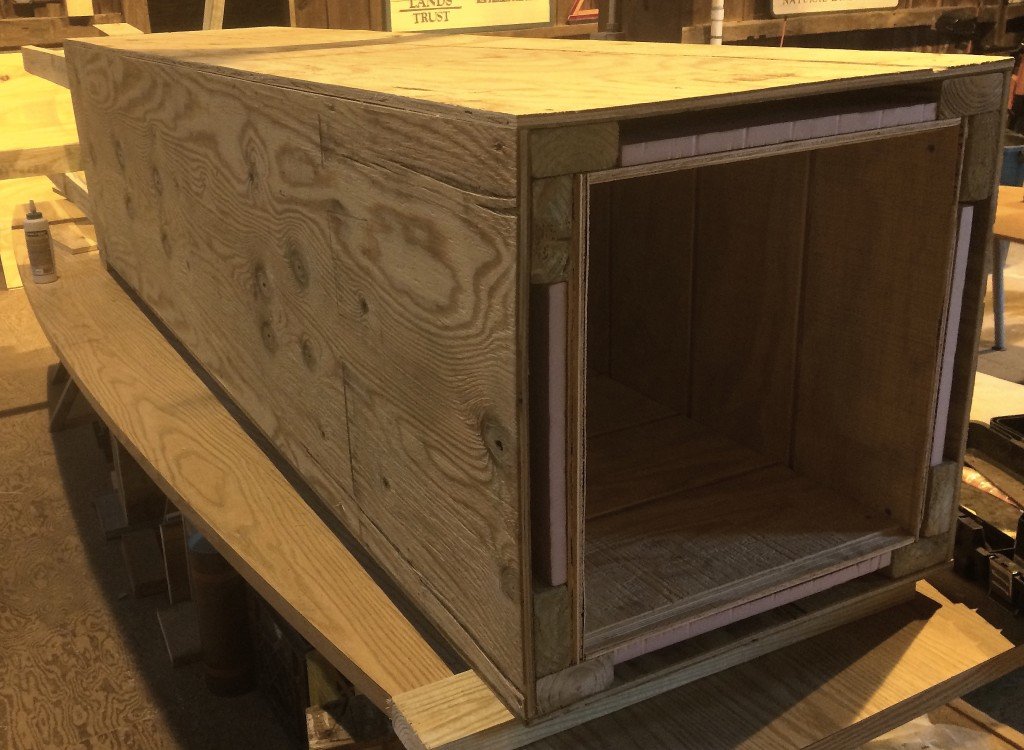
I couldn’t find any suggested measurements for the upper opening but the pictures looked about like this. The recommendations are just that the new opening is not more than half the size of the original opening; and that it is closest to the North facing side of the tower. Again I think the purpose of this is to reduce temperatures in the tower by allowing less of the southern sun to penetrate the interior.
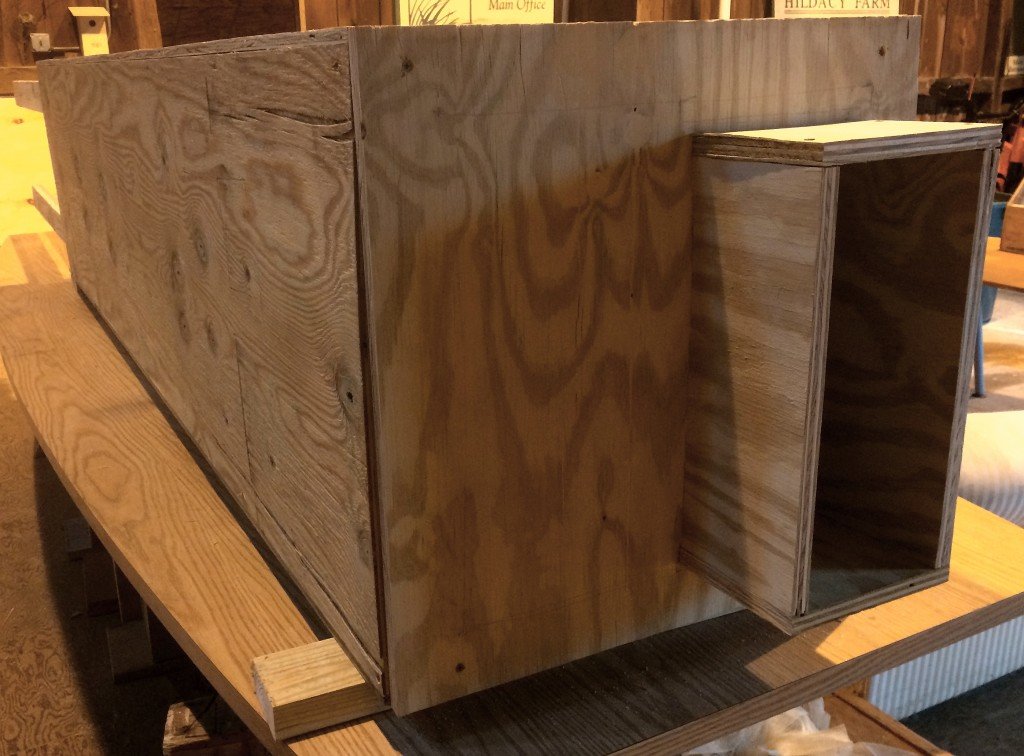
I added Swift stencils so that the birds (and other interested parties) will know what this thing is for.
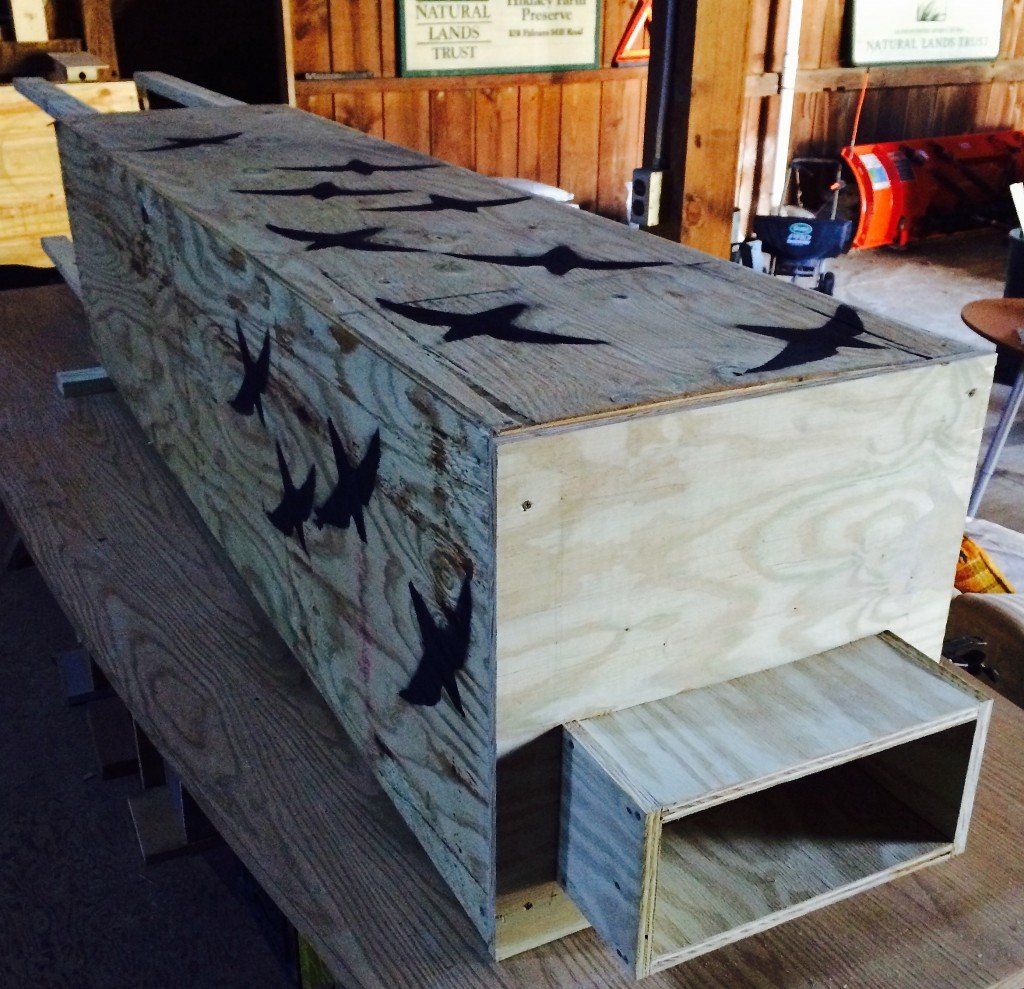
A predator guard of metal flashing will also be added before the tower is put into place.
One somewhat disheartening aspect of this construction process is that at best, this 12 foot tall tower will support ONE PAIR of nesting chimney swifts. While swifts often roost communally (especially just prior to migration), within each structure only one pair of swifts will build a nest.
If one does, I may be repeating this process in the future.
